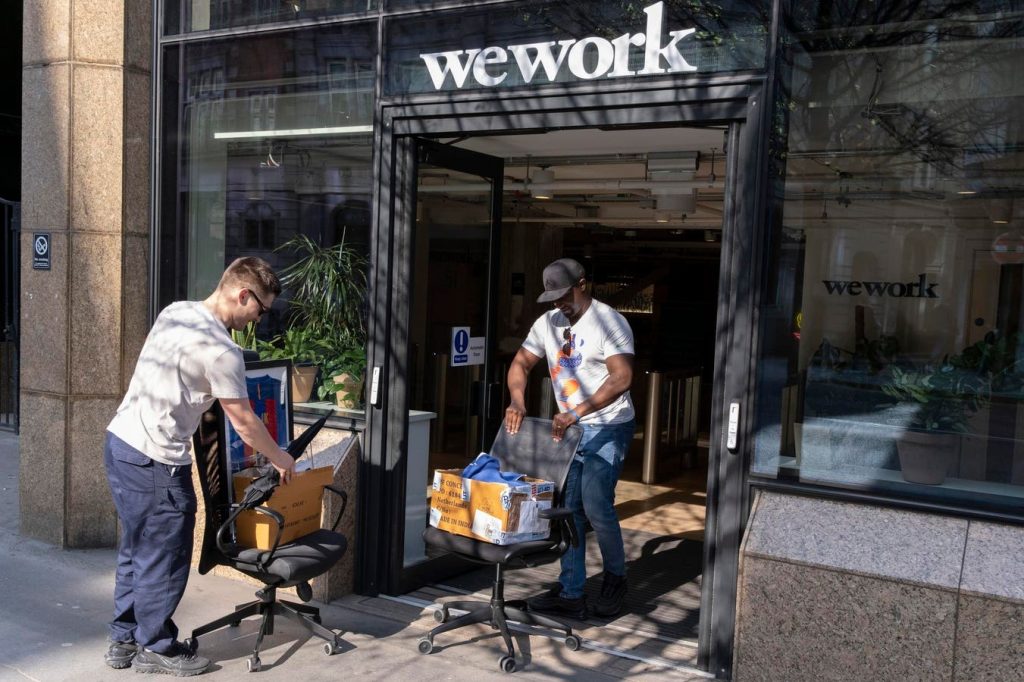Lessons from a fallen unicorn
It was the dazzling unicorn of the last decade’s venture capital boom, capturing the zeitgeist of a new way of working and riding it to a $47 billion valuation. But WeWork never came close to actually working.
Now, the flexible workspace provider has filed for bankruptcy, sealing its journey from tech darling to poster child for overhyped startups.
The company’s fate isn’t just a cautionary tale for startup founders and VCs—it contains valuable lessons for business leaders at established companies too. Similar strategic miscalculations in launching new ventures are repeated every day by big companies, costing them billions of dollars in squandered opportunities every year.
Of course, it’s easy to dismiss WeWork as a particularly spectacular example of a VC-driven burnout. Adam Neumann, its charismatic, (and erratic) founder, didn’t help, pouring millions into expensive distractions such as an artificial wave company and a $63 million private jet. His wife and co-founder reportedly demanded the firing of WeWork employees for emanating “bad vibes.”
But even a $5 billion cash injection from its main financial backer, SoftBank, and the installation of professional management couldn’t turn WeWork into a viable business. Its problems ran far deeper than an individual leader.
It’s never a good idea to take joy in others’ misery. But it’s a great idea to learn from their lessons. When you boil it down, there are three questions that every new business needs to answer. WeWork got one of them right but fumbled the other two badly. These questions are important for startups, but they’re critical for anyone trying to launch a new business within a large enterprise.
1. Is there a clear need?
Despite their subsequent missteps, WeWork nailed this question. In 2010, when the company launched, office work was becoming more flexible and remote, creating a classic market-disrupting opportunity. Ironically, as WeWork implodes today, that need has only grown larger and clearer as hybrid work becomes the new normal in the wake of the pandemic. Startups have revenue pressures that force them to identify a clear customer need. Established companies can go a lot longer while avoiding the issue. Too often, large enterprises launch new products and business ideas that came straight out of R&D. When that happens, they pour money into an idea that’s a solution in search of a problem.
Take Meta’s huge investments in virtual reality and augmented reality technology—just shy of $24 billion in 2021 and 2022. Maybe the hefty expenditure will pay off one day, but, for now, even Meta’s employees don’t know what is a real use case for the Oculus VR headset. As is the case with many large companies, Meta is going to have a hard time turning around their strategy after betting so heavily in one direction. That’s less of an issue for startups, which are more nimble and can shape-shift their product to fit a different solution—or they simply run out of money.
2. Is there a profitable solution?
You can have a great product that’s not a viable business. WeWork was so convinced it had a brilliant solution that it expanded to dozens of cities around the globe before establishing that it could make money. It wildly overestimated the size of its potential market and underestimated how easily competitors could replicate its business model. In the end, its economics were all wrong—its model of taking out long-term leases and renting out spaces short-term was never viable at scale.
Too many large companies fall into the same trap by trying to conquer a market before they’ve proven a solution’s viability in a single case. Toyota appears to have made this mistake with the launch of an in-house tech startup that was supposed to build industry-transforming software for cars. Two years on, the “Woven Planet” venture has stalled.
Many of us have seen PowerPoint presentations that prove their business viability with an argument that goes like this: “The market for widgets is $100 billion! Imagine if we got just 5% of that!” They forget to mention that building market share doesn’t happen overnight and that they don’t know how much or how a customer would pay for the proposed solution. Rather than going top-down, it’s better to work bottoms-up: how much would ONE customer pay for ONE widget? And how much money could we make on that ONE sale? And how many of those customers could we reach in the first 18 months? Before tackling an entire market, first prove you can sell a profitable solution to a single customer.
3. Is it a resilient business?
A viable solution is great, but new ventures need to survive changes in economic and market conditions. WeWork clearly failed on this score. Its rise coincided with a period of rock-bottom interest rates and strong demand for commercial office space that formed the perfect tailwind for its model. But the post-pandemic surge in borrowing costs and deflated demand for office space exposed its lack of resilience, forcing it to burn through half a billion dollars in the first six months of this year.
Contrast that to the way JetBlue was built before its first flight in 2000. Thanks to a non-compete clause he signed with Southwest Airlines after the sale of his previous airline, JetBlue founder David Neeleman had a full five years to think through every reason why fledgling airlines usually fail. As a result, he made sure that JetBlue raised enough cash to withstand shocks such as fuel price rises, secured prime landing slots at New York’s JFK airport, and focused on creating a strong culture to help insulate it against unionization. The airline thrived, despite launching a year before the 9/11 attacks. A quarter-century later, it’s the fifth biggest U.S. airline in the country.
Thinking ahead and building resilience into new ventures is particularly crucial for existing businesses where the psychological and individual career costs of failure are high. Startups, by contrast, fail all the time—and they only need to make it through to their IPO. To be sure, this isn’t about predicting the future. It’s about planning for multiple future scenarios.
As WeWork takes its place in the corporate hall of infamy, innovation leaders at existing businesses should avoid the temptation to gloat and instead heed its valuable lessons. They need to embrace startups’ obsessive focus on establishing a clear need. And unlike WeWork, they have to outdo startups by ensuring their solution is both financially viable and resilient enough to thrive in a wide range of possible futures.
Dev Patnaik is the CEO of Jump Associates.
Read the full article here










